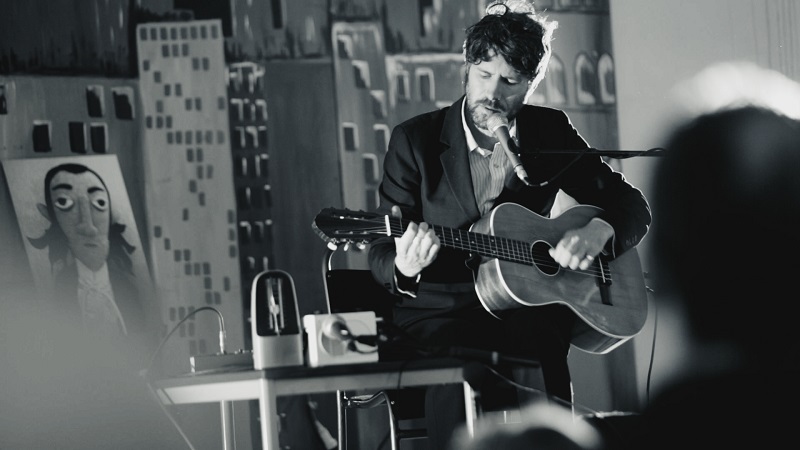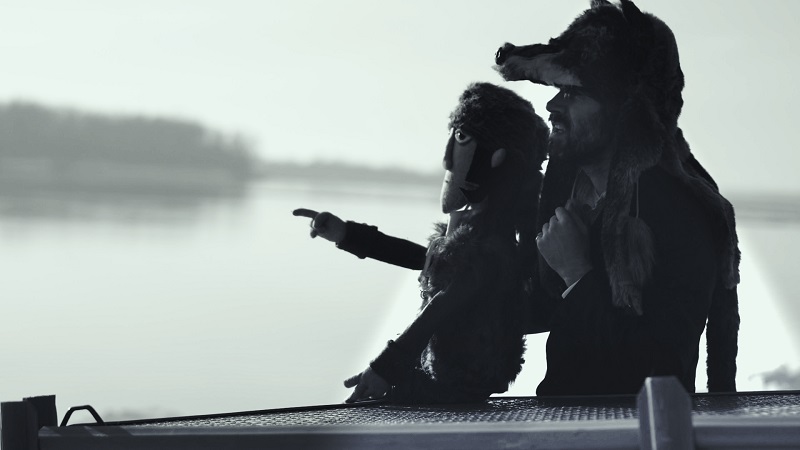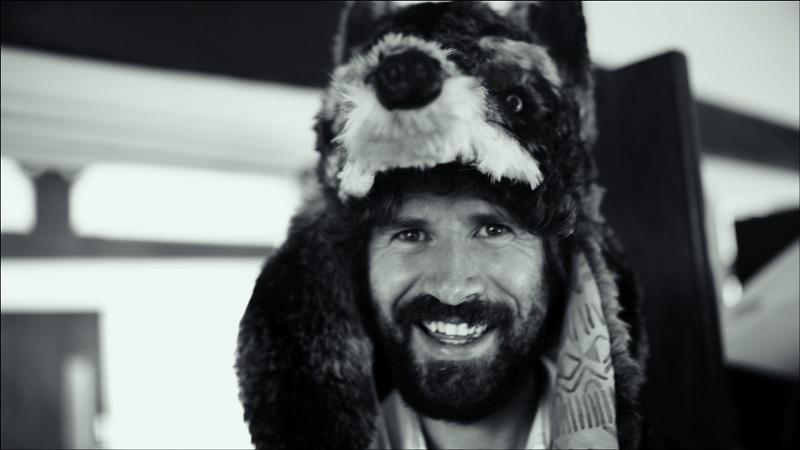It hardly sounds like the springboard for an album, a film, a book and an app. In the 1780s a young Welsh explorer called John Evans journeyed across the unmapped North American continent in search of a tribe of Welsh-speaking Native Americans. His only source for the tribe’s existence – and linguistic preference – was a legend which claimed that a Welsh prince by the name of Madog ab Owain Gwynedd discovered the New World 300 years before Columbus. It’s no plot spoiler to reveal that Evans did not find the tribe.
Evans’ journey has spawned American Interior, the album, the film, the book (not forgetting the app). They are the work of Super Furry troubadour Gruff Rhys, and they all in their own way contain wonders. Rhys hasn’t been at the day job for a while now – the last SFA album was in in 2009 – and his solo projects have assumed the character of a restless quest. In the film Separado! he went in search of the Argentine crooner who looked like a cowboy but sang in Welsh and was some sort of long-lost uncle. In American Interior Rhys is once more claiming kin with an alleged forebear John Evans. As he embarks on the trail of another tall Welsh story, this time the project keeps on multiplying. The tour which is the basis for the film American Interior took place in 2012 and was filmed by Separado! director Dylan Goch. The book was published recently alongside the album and the app, and now there’s another tour of PowerPoint gigs to promote all three. More dates are promised for next year.
In the film Rhys comes across as a modest, rather introverted figure but wry and witty with it. So it proves in conversation as he tells theartsdesk about his semi-scholarly odyssey along the Missouri accompanied by a delightful felt avatar of John Evans and, on occasion, a super furry animal by way of headgear.
JASPER REES: What was the very origin of the myths of a Welsh tribe of Native Americans, and how did you come across John Evans?
GRUFF RHYS: I’m basing my knowledge for the most part on the books of Professor Gwyn A.Williams. He states that there were a few mentions of Madog by a few Welsh poets. And these pretty vague stories essentially say that Madog is supposed to have existed. His story kind of grew. And then he was used as a propaganda tool by the Elizabethan court. John Dee solidified these vague stories in order to give Elizabeth the first warrant to annex America in the name of the British Empire. After the Act of Union with Wales the British Empire had, as far as he saw it, the moral right to claim North America because Madog had been there first.
But then over the centuries people started to add very specific details to the story, like the dates and the amount of boats that Madog had taken out there. But some weren’t added on till the 19th century. So it’s a very vague story that grew and grew to the point where people had forgotten its origin and presumed it was a historical fact. Whereas the story as we know it is an invention to meet political ends. A lot of people in Wales still believe in it. I think it’s healthy if you don’t know about Madog - because he didn’t exist! John Evans is like an outsider in history. He’s a footnote in the Madog story and a tiny footnote in Spanish colonial history. It’s more of a good story, but through his life we can look at the history of a lot of different people.
Why did you want to tell the story in four different ways?
I suppose mediums are quite fluid. The first thing was the investigative concert tour following his journey. And it caused an album along the way and Dylan Goch filmed everything. The music is more emotional ground that detailed history. I kind of wrote a book to fill in the details. We interviewed so many people and there was only so much we could cover in the film and I didn’t want the record to a detailed historical artefact. It would have been very difficult to listen to. So I wrote a book as somewhere to contain all the detail anyone would want to know. We decided on an app quite late on. It could have been a website or an eBook. I suppose that’s more geographical. You follow the journey on a map and you pick up even more information that didn’t make it into the film or the book. The app isn’t quite as concerned with the John Evans narrative. There’s some mini documentaries and political aspects of Native American history.
 Did your interest in the story of John Evans translate very easily into music?
Did your interest in the story of John Evans translate very easily into music?
Before going on the tour I wrote four or five songs – “The Whether” and “100 Unread Messages” - as things to play live. As the journey progressed I realised how hard his life had been and how sad the story. Songs like “Liberty” and more emotional downbeat songs came during and after the journey. The songs gradually got more and more morose, the more I knew.
The film tells a tragic story that ends with Evans’ ostracism and early death in New Orleans. And yet your presence is essentially a comic one: you can’t help being funny. Did you have trouble reconciling these two tonal strands?
It just makes things easier. If you’re given a microphone and you make people sit down, it’s a huge responsibility. I’m not academic so I come to it as a songwriter. Why would anyone want to know about an obscure Welsh explorer from the 18th century? His story is a kind of tragicomedy. He was absolutely misguided that he should have embarked on the expedition. But he did incredibly well to complete his journey! It’s near miraculous in a way. I think it’s important to have a grasp of the absurdity of it and the absurdity of colonialism. John Evans is a pawn in the middle of these imperial fantasies.
I’m definitely getting interested in the gaps between songs
Has it surprised you to watch yourself turning into a historian?
I’ve no interest in being a historian so that makes it easier. In a similar way that I’ve never been interested in being a guitarist. I don’t think John Evans ever wanted to be a map maker. I think life’s like that for most people. You end up doing something with no intention of getting into it but life leads you to it.
The most moving section of the film is about meeting the last surviving speaker of the Mandan language in North Dakota, who is trying to pass it on before he dies. You talk to him about the Welsh language. Is this film at least partly about the survival of Welsh?
Both Dylan and I speak Welsh is a first language. We’re in our forties and we’ve seen the language deteriorate right in front of our eyes from Welsh-speaking communities which are meant to be the heartlands of the Welsh language. That’s where the language is in decline. We know how fragile the language is in this globalised economy. So we’re instinctively going to focus on other people who are in similar situations and use that. It’s very harrowing meeting the physical manifestation of the end of a language but very inspiring in a different way. It’s ironic that we’ve portrayed this story for the most part in the English language.
Have you notice attitudes toward Welsh changing?
I think it’s far more positive than when I was a kid. I think there’s been a huge change in terms of the appreciation of it. But not so much legislation, especially in education, to make the most of very positive attitude.
Are you now making films because making music is not enough?
I think as long as they’re attached to music which is what I feel like I do for the most part, I don’t think I should feel constrained by the limits of a CD. It’s probably best not to worry about how these projects end up. I’m definitely getting interested in the gaps between songs.
Is there the possibility of a Super Furry Animals re-emergence?
I’m having a rest at the moment. I dunno. But there’s no concrete plan. Guto’s band had an album come out a couple of months ago; they’re going to be touring in October. Daf’s band had a LP and short tour in October as well. Cian has a number of projects. He’s working on a film as well. And Huw is finishing up some solo stuff that he started quite a while ago. We’ve all got loads coming out. Mostly on Strangetown Records if anyone wants to go to SoundCloud. There’s lots there.
 From the evidence of American Interior, you clearly enjoy the liberation of playing intimate venues to audiences which, as the film proceeds, get smaller and smaller.
From the evidence of American Interior, you clearly enjoy the liberation of playing intimate venues to audiences which, as the film proceeds, get smaller and smaller.
Something I like to take advantage of when I go solo. Being in a rock band can be a very industrial process. A lot of people are involved and it costs a lot of money to put on a show, whereas when I play solo I can just take a guitar and go anywhere. Not all the gigs made it into the film but there’s a version of American Interior without the talking with just the songs on the DVD which is called Footnotes. I can play to wild animals.
You also wear one on your head in some of the film.
Yeah. Inspired by William Price, the radical Welsh druid who used to wear various animals on his head. It seemed a good idea at the time. I was trying to prepare myself for the wilderness. Always be prepared for any eventuality.
And you were accompanied into the American interior by a John Evans puppet who, without uttering a word, is also extremely funny. How did he comes into being?
Like most things it’s often a process rather than hitting on one idea. It’s about following small ideas and they accidentally become a different idea. Originally I wanted the avatar to be about six inches long and I was going to hang it from the rearview mirror of the van. It gradually grew. I think maybe someone got the dimensions wrong at some point and it became a full-sized avatar. We were going to do a lot of CGI effects but he’s so alive with the wind in his hair. He needs very little manipulation.














Add comment